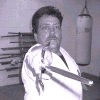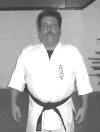MARTIALFORCE.COM
PRESENTS
AN INTERVIEW WITH
OCT / 2003
Terry Hotchkin
Sensei
“you will only get out of it what you put into
it”.
By Eddie Morales
MartialForce.com
Online Martial Arts magazine
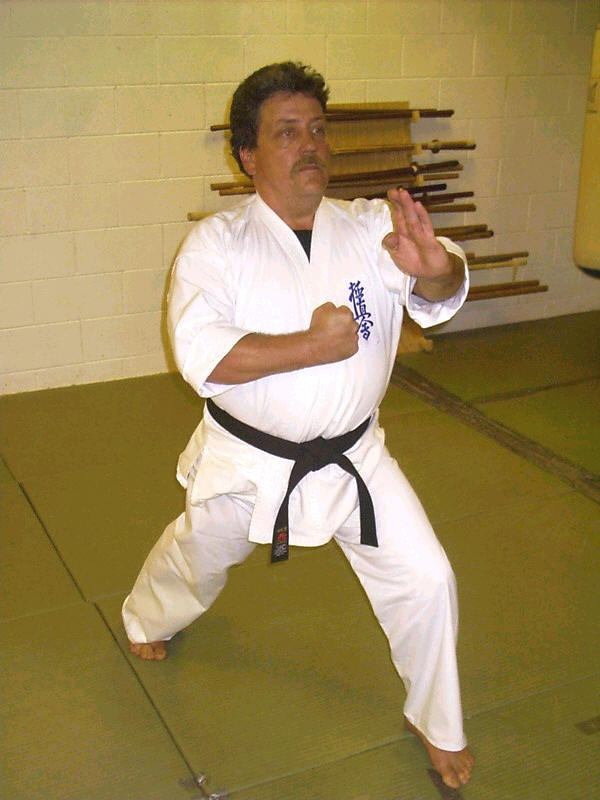
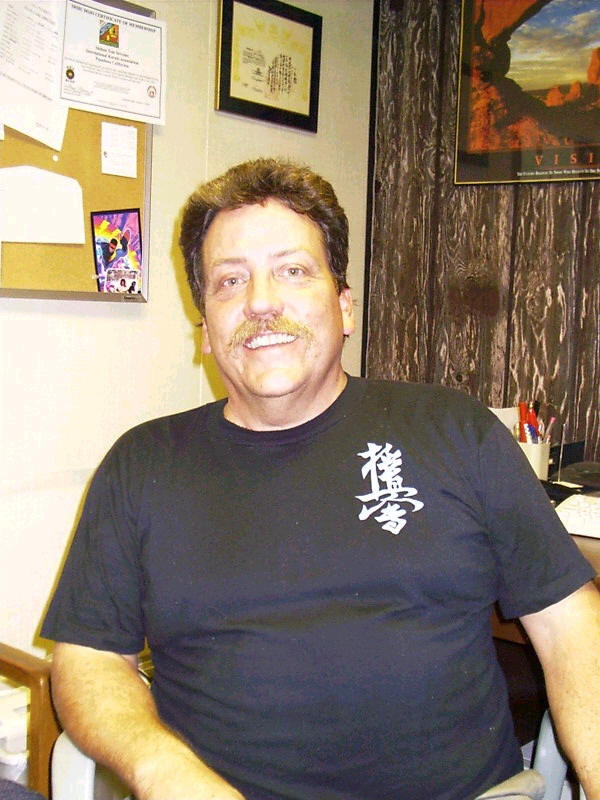
“It wasn’t until the early
1990’s, that I became aware of my disorder. My wife would notice that while I
talked or read, the words would either be mixed up or said wrong. Not
realizing why, confused me. We decided it might be best to seek professional
attention.
After a lengthy interview and
testing process, I was diagnosed with dyslexia. The good news I was told was
that my condition was not so severe. With good therapy, over the course of
time, I would be able to develop better control of it. Improvement would best
be achieved through sequential training programs.
During the 3 years of going to
therapy, it dawned on me to ask how the programs worked. I kept notes to use
as a teaching guide and researched the various methodology used in the
treatment of dyslexia. These methods have also been found to help troubled
children who displayed difficulties in learning. Here are some strategies,
which are helpful:
“Working with dyslexic students
begins with learning how to teach with appropriate methods. If you have the
time to work with students one on one, even if you need to teach them
privately, do so, they are well worth the time. In turn, you will have a
better understanding of what causes confusion for them and what helps them.
Everyone learns in the process and that indeed is the beauty of teaching.”
“One
who thinks they know it all is one who doesn’t know all there is to know”.
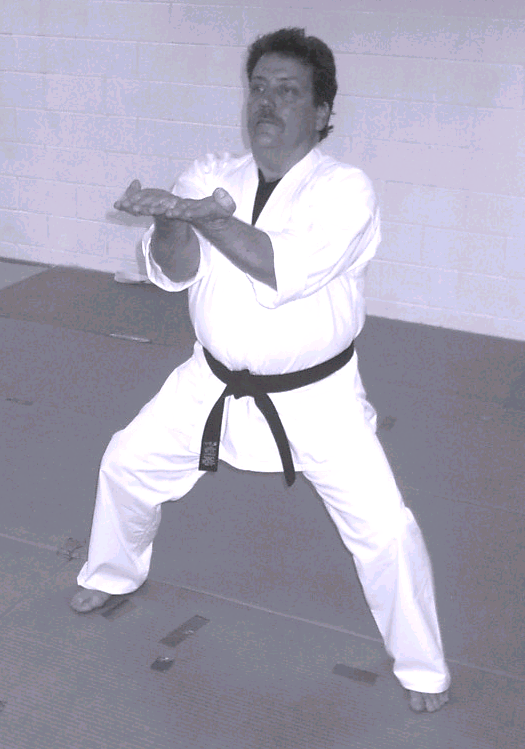
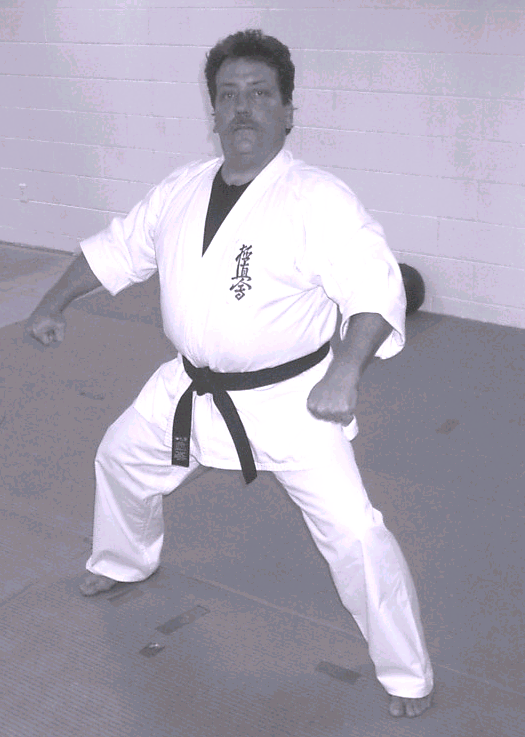
MForce:1)How many years have you been
training in karate?
TH:”I started at the age of seventeen. I am
now fifty years old.”
MForce:2)Who is your instructor?
TH:
”Kancho Steve Senne, MDTCM,(Medical Doctor of
Traditional Chinese Medicine), ND, (National Director) Founder of the Leopard
School of Martial Arts, also, Shihan
Ingrid Larson.
(Senne Kancho is the top student of the late Kancho Donald Buck, MD, TCM,
Founder of the “School of the Fierce Tiger”, the name given to him by Sosai
Mas Oyama. Donald Buck Kancho was sought out by Mas Oyama to train in 1956 and
appointed chairman of the Kyokushin Organization of the US in 1986.)”

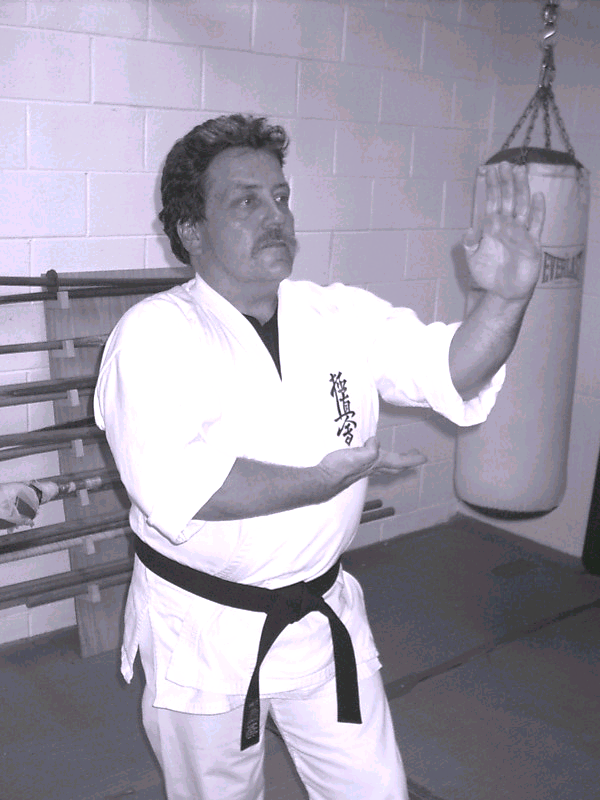
MForce:3)Why did you choose the system that
you practice?
TH: “I found that Kyokushin Karate taught by
Master Steve Senne was what I was looking for. I wanted hard training,
conditioning as well, due to my hot tempered nature. I found much more than
balance. In order to learn, and later in order to teach, I needed to use my
head instead of my anger.”
MForce:4)Do you emphasize street defense or
sport?
TH: “Street awareness is a more accurate
method. What I have found over the past 30 years, is that if you keep it
simple, people retain more. As a result, they in turn can teach their families
and friends. In today’s world, people need peace of mind. They need to know
that in the event that something does happen, with sound defense and offense,
and the correct frame of mind, they can correctly handle a street situation.”
“Practicing sport karate is a great
experience for practical application as well as to spark the competitiveness
in all of us. I hold a Class B Certificate in the AAU. It’s a great way to
observe so many different styles that are taught.
MForce: 5)Where do you teach?
TH: “Right now I teach privately at my home.
I have an acre of property in my back yard so space is not a problem. I
currently have in the works plans on a new dojo location in the city of
Pasadena.”
MForce: 6)Who influenced you the most in
your training?
TH: “Shihan Ingrid Larson was the head of
the Pasadena dojo where I started my training. I was also a student under
Sensei John Walsh of the South Pasadena dojo. After three years with Sensei
Walsh, I left to become assistant instructor under Shihan Larson who was
kancho’s top technician. She took me under her wing and during the next five
years put me through intense kata, and full contact kumite. The basics and
correct breathing techniques were the heart and soul of our training and
essential for complete focus of the Kyokushin contact. “
MForce: 7)Are you open to other styles of
training?
TH: “There have been other styles that my
master encouraged, judo, jujitsu, hungar kungfu, taichi, and goju shorei. I am
presently training with Shihan Tom Serrano in Okinawan Kobudo, the bo, jo,
nunchaku, tunfa etc.…I always believe that to master the arts you should have
a foundation and work your way out. To study other styles allows you to look
from a different perspective and helps you truly understand “DO”





MForce: 8) If you had to pick one thing that
motivates you to train and teach, what would that be?
TH: “To balance the mind, body and spirit
but most of all, to pass on what was taught to me. I have heard from students
twenty years later how their life was changed and they in turn passed it on to
their children. It does come full circle”.
MForce: 9) What are your thoughts on kata
training?
TH: “Kata allows balance, timing and
following movement in a passive way. Once applied to kumite it becomes a
strong part of the “waza” technique. Worked with a partner the combinations
are endless. It is also the part of the martial arts that can be practiced in
your golden years.”
MForce: 10) What are your thoughts on
tournament competition and would you recommend it to your students?
TH: “Absolutely! Tournaments allow you to
apply your techniques. I would push my students to try left-handed kumite if
they were dominantly right handed. Competition in a controlled environment has
great benefits as well as finding your weak points. Twenty years of it taught
me this and I still enjoy kumite.”
MForce: 11) What is the Leopard School
Martial Arts about?
TH: “It is my master’s dojo for over forty
five years. Kancho Donald Buck MDTCM and Sensei Steve Senne, together taught
Kyokushin karatedo.They both were students and friends of Sosai Mas Oyama and
family.Kancho Senne is a UC.ED acupuncturist .When I started in 1970, the dojo
was called “The Karate School of Oyama.” After a while, Kancho Senne opened
his dojo, The Leopard School of Martial Arts .in 1979. Kancho hosted Sosai
Oyama in my dojo at the Pasadena Y.M.C.A. in order that Oyama could review the
Tiger and Leopard Schools. It was my honor and privilege to meet Sosai Oyama
personally and receive my Shodan.”
MForce:12) What rank or ranks do you hold?
TH: “In October 2001, Hanshi S.Senne took
the rank of ju-dan “10th Degree”, founder of the Leopard School. At
the same promotion, I was awarded ku-dan “9th Degree”, and
assistant founder. I have been the head of the grading counsel for the past 15
years .I would travel to all his dojo in southern California as well as Texas
to review the schools and teach advanced techniques to the sensei. I was at
the Pasadena Y.M.C.A. for 19 years and Monrovia for 8 years.
RANKS:











